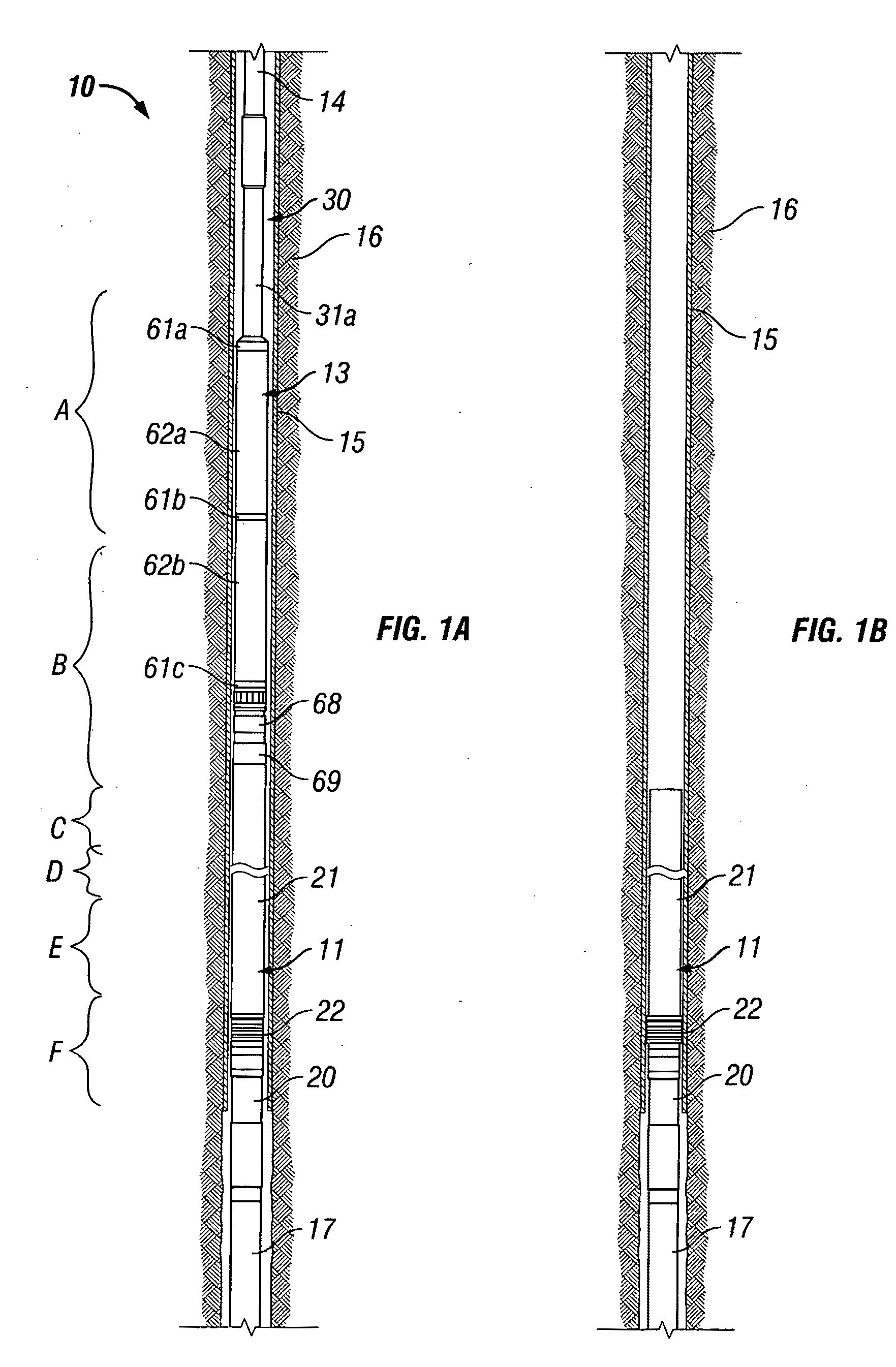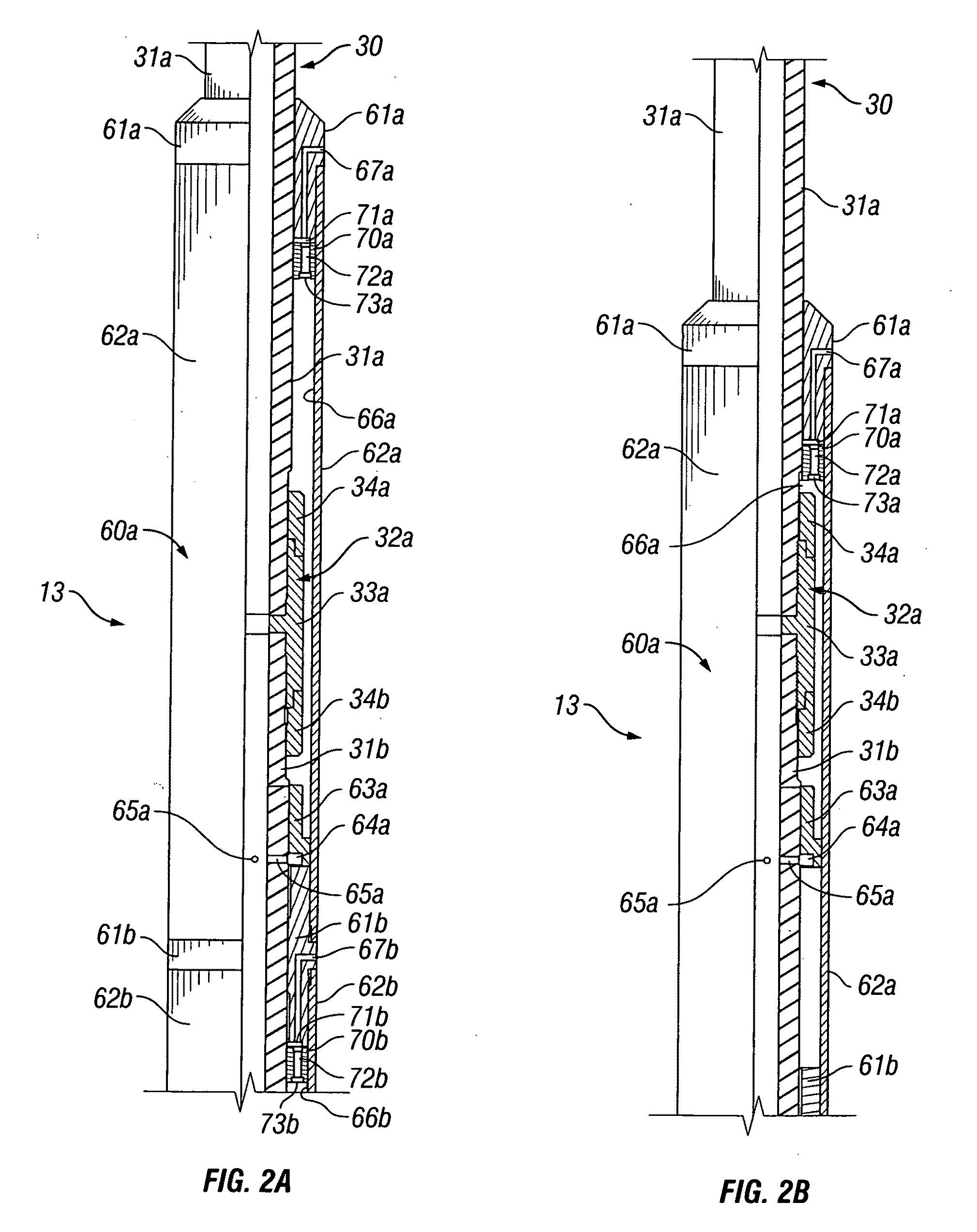This simplified drilling process, however, is rarely possible in the real world.
Also, as a well is drilled deeper, especially if it is passing through previously depleted reservoirs or formations of differing porosities and pressures, it becomes progressively harder to control production throughout the entire depth of the borehole.
Portions of existing casing also may fail and may need to be patched by installing liners within damaged sections of the casing.
In practice, however, the wedges, cones, and the like that are intended to grip the existing casing may partially extend as the tool is run through existing casing and can cause the hanger to get stuck.
They also may break off and interfere with other tools already in the well or make it difficult to run other tools through the casing at a later time.
Nevertheless, they suffer from significant drawbacks
First, because part of it must be expandable, the liner is necessarily is fabricated from relatively ductile metals.
Such metals typically have
lower yield strengths, thus limiting the amount of weight and, thereby, the length of liner that may be supported in the existing casing.
Shorter liner lengths, in deeper wells, may require the installation of more liner sections, and thus, significantly greater installation costs.
This problem is only exacerbated by the fact that expansion creates a weakened area between the expanded portion and the unexpanded portion of the liner.
This weakened area is a potential failure area which can damage the integrity of the liner.
Second, it generally is necessary to expand the liner over a relatively long portion in order to generate the necessary grip on the existing casing.
It can be a significant
limiting factor, however, when the expanded liner portion is intended to support long, heavy liners.
Thus, there is progressively more friction between the expanding tool and the liner being expanded and more setting force is required to overcome that increasing friction.
The need for greater setting forces over longer travel paths also can increase the chances that liner will not be completely set.
Thus, it may not be possible to fabricate the liner from more
corrosion resistant alloys.
Another reality facing the oil and
gas industry is that most of the known shallow reservoirs have been drilled and are rapidly being depleted.
Many operations, such as mounting a liner, can be practiced with some degree of error at relatively shallow depths.
Similarly, the cost of equipment failure is relatively cheap when the, equipment is only a few thousand feet from the surface.
When the well is designed to be 40,000 feet or even deeper, such failures can be costly in both time and expense.
There is a certain irony too in the fact that failures are not only more costly at depth, but that avoiding such failures is also more difficult.
Temperature and pressure conditions at great depths can be extreme, thus compounding the problem of designing and building tools that can be installed and will function reliably and predictably.
Such actuators, however, can be damaged by the hostile environment in which they must operate.
The hydrostatic pressures encountered in a well bore can be extreme and imbalances between the pressure in the mandrel and outside the
actuator are commonly encountered.
If the ports are closed while the tool is being run into a well, such pressure differentials will not cause
unintended movement of the
actuator, but they can impair subsequent operation of the actuator by deforming the actuator cylinder.
Fluids in a well bore, however, typically carry a large amount of gritty, gummy debris.
Nevertheless, the tool may be exposed to
wellbore fluid for prolonged periods and under
high pressure, and debris still can work its way into conventional actuators and impair their operation.
The rotational forces transmitted through the tool, however, can, be substantial and can damage threaded connections by over-tightening the threads.
In either event, if connections in the torque transmitting components are impaired, it may -be difficult or impossible to operate the tool.
Set screws, pins, keys, and the like, therefore, have been used to secure a connector, but such approaches are susceptible to failure.
 Login to View More
Login to View More  Login to View More
Login to View More 


